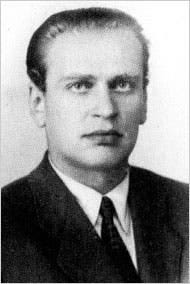Why were they so protective of KGB false defector Yuri Nosenko?
Why were Bruce Solie, Leonard V. McCoy, George Kisevalter, John L. Hart, and Harold Osborn so protective of KGB false defector Yuri Nosenko?
Was it because Nosenko said the KGB had nothing to do with Lee Harvey Oswald in the USSR, or was it because they believed that the Agency’s distrusting Nosenko would somehow hamper their own operations, or was it because they were KGB “moles,” themselves?
Background:
General Oleg Gribanov was the head of the KGB’s Second Chief Directorate (today’s FSB — domestic intelligence and overall counterintelligence) in the 1960s. In late May or early June 1962 (accounts vary), he sent Yuri Nosenko to the CIA (Tennent H. Bagley and probable “mole” George Kisevalter) in Geneva to discredit what recent true defector Anatoliy Golitsyn was telling James Angleton about possible KGB penetrations of U.S. Intelligence and the intelligence services of our NATO allies.
In January 1964, Nosenko recontacted Bagley and Kisevalter in Geneva, saying now that he wanted to physically defect to the U.S. and leave his (beloved-in-1962) ostensible wife and two daughters behind in Moscow to fend for themselves. Since he claimed he had been Lee Harvey Oswald’s case officer for two-and-one-half-years, CIA had no choice but to let him in despite the fact that top management was convinced he was a “plant.”
Author (and former high-level Army Intelligence analyst and NSA officer) John M. Newman says in his 2022 book, Uncovering Popov’s Mole, that Solie was probably a KGB “mole,” and that he probably sent — or duped his confidant, protégé, and mole-hunting subordinate, James Angleton, into sending — Oswald to Moscow in 1959 as an ostensible “dangle” in a planned-to-fail hunt for “Popov’s Mole” (Solie) in the wrong part of the CIA.
Which futile mole hunt lasted nine years, tore the Soviet Russia Division apart, and drove Angleton nuts.
Former CIA officer W. Alan Messer has written an article titled “In Pursuit of the Squared Circle: The Nosenko Theories Reconsidered” in which he speculates that in January 1964, Gribanov, mistakenly believing that the CIA trusted Nosenko from its 1962 encounter with him, sent him back to Geneva to convince the CIA that the KGB had nothing to do with Oswald in the USSR, but, being desperate to live in the U.S. and knowing that he had some golden “intel” which could get him in, Nosenko “went rogue” and the KGB had no choice but to continue supporting him in the U.S. because he was telling the CIA and the FBI what it desperately wanted them to hear.
Which makes sense to me . . . and helps to explain why Nosenko was so ill prepared to defect.
*Today’s SVR and FSB


